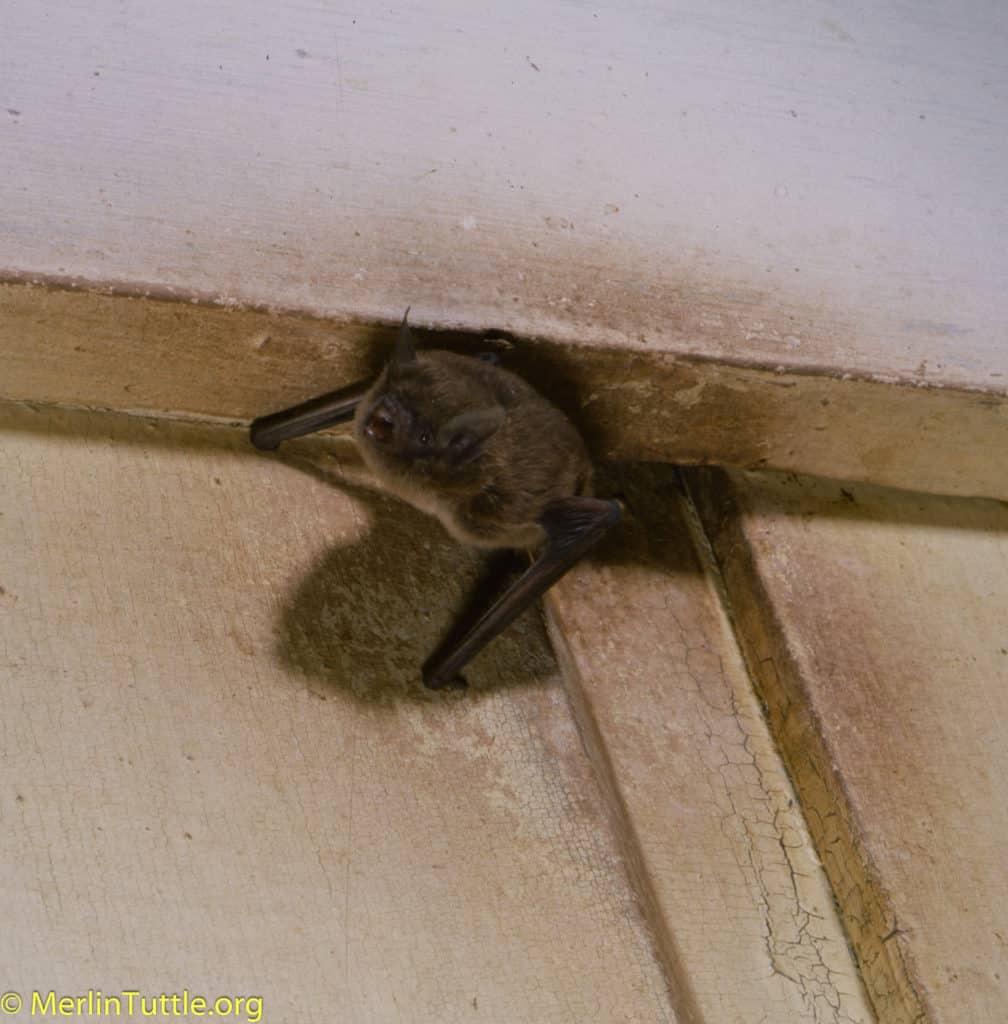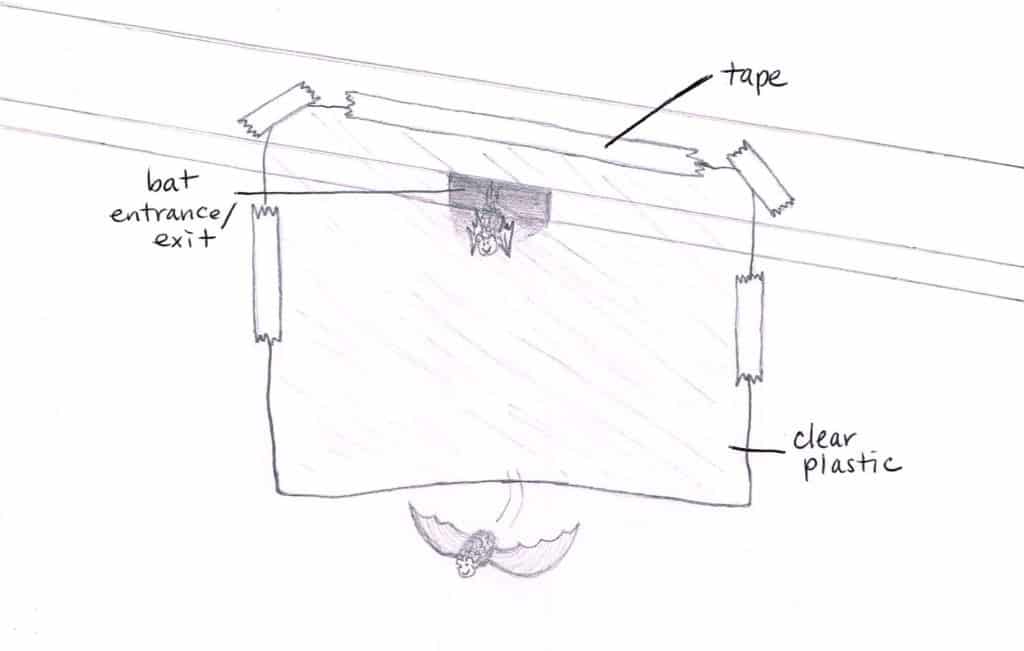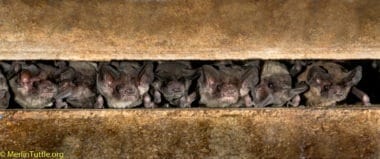Typically, the first question about bats in buildings is, “Aren’t they dangerous?” In my experience, the greatest risks stem from panicked responses, not from the bats themselves. Once the fear factor is removed, the options for problem solving are often relatively simple.
There are two kinds of problems associated with bats in buildings. The sudden appearance of a lost individual in one’s home or office versus a colony of bats in a wall or attic that causes no immediate problem, but may eventually grow to cause a nuisance, normally limited to odor or noise.
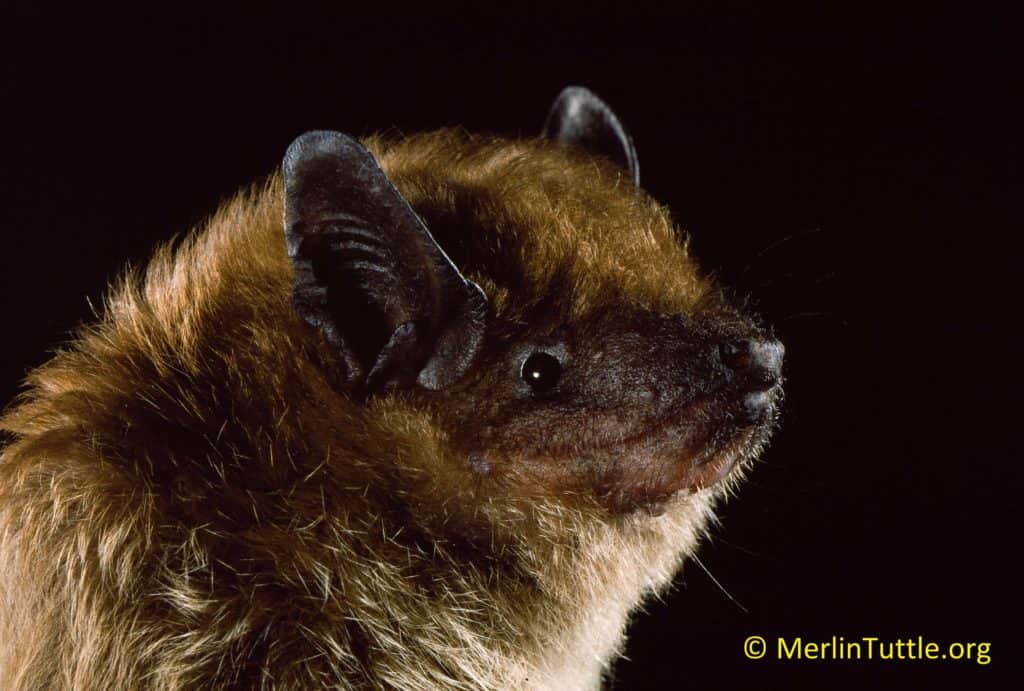
Disease Fears in Perspective
Risks of being attacked by a rabid bat have been greatly exaggerated. The odds of being attacked by any bat are so remote that in more than 55 years of studying hundreds of species of bats worldwide, sometimes surrounded by millions at a time in caves, I’ve still never been attacked nor documented anyone else being attacked.
Like other animals, frightened bats will bite in self-defense if handled. Veterinarians, and anyone who handles unfamiliar animals, should be vaccinated against rabies. However, for anyone who simply doesn’t handle bats, the odds of contracting any disease from one are extremely remote.
I’ve investigated hundreds of reported bat attacks without being able to validate even one. Bats chasing insects nearby, or merely searching for a way to escape from a home, are easily misconstrued as attacking. A bat in a room often flies back and forth between corners, searching for an exit. Each time it reverses course it loses airspeed and begins to fall. To regain flight, it must swoop down. A frightened person in the middle of the room often mistakes this for an attack and flees before discovering otherwise.
Of course, those recounting such “narrow escapes” are sincere and convincing. And, added to this problem, are grossly exaggerated media stories, often planted by those who profit from human fear. This is especially true of rabies warnings in America, particularly those of supposedly undetected bites.
There is only one other disease that has raised warnings in North America, and it is rarely serious. Bat droppings can harbor a fungus, Histoplasma capsulatum, that causes Histoplasmosis in humans. However, most human infections come from birds.
This fungus is widespread from the Americas and Europe to Africa and the Far East. It is found in soil enriched by animal droppings, such as in city parks where there are pigeons, rarely in hot attics. Fortunately, symptoms are normally too mild to be detected or are mistaken for a common cold. Serious illness can occur in immuno-compromised individuals, or in those who inhale extraordinarily large amounts of dust associated with animal feces, typically those of birds. Most Americans living in the Ohio or Mississippi River valleys have been exposed without even being aware of it.
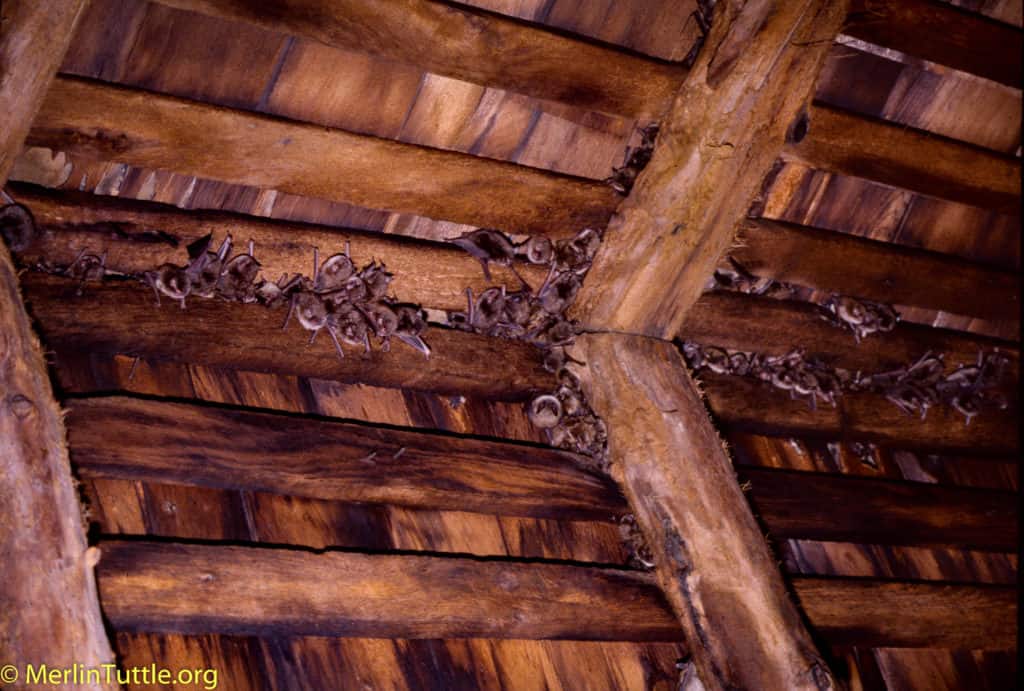
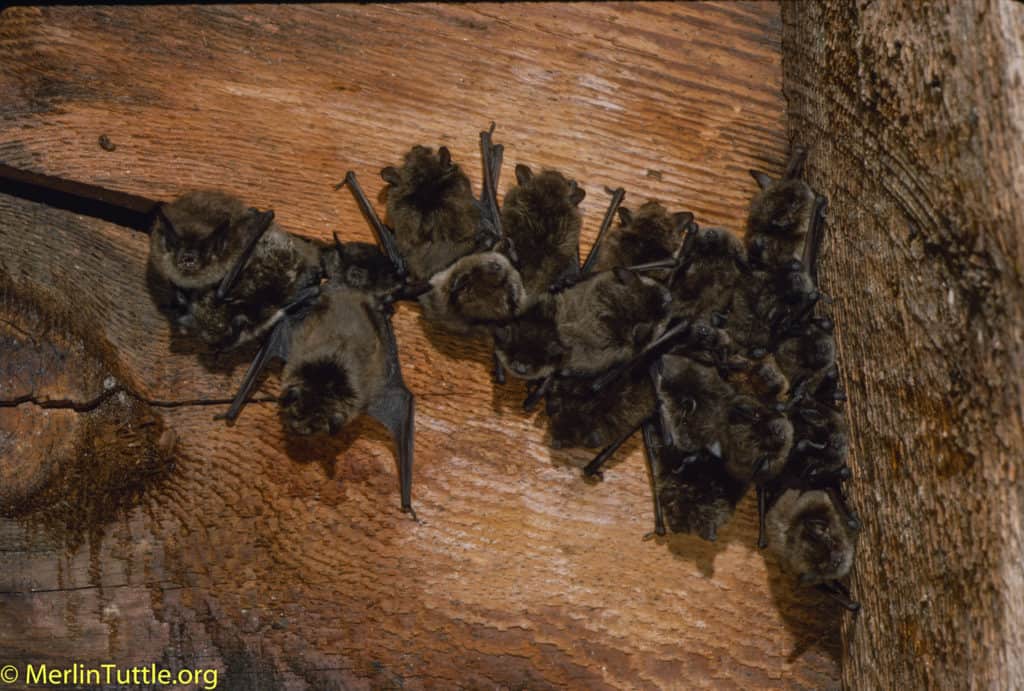
Surprise Visitors
Bats that enter human living quarters are typically lost youngsters. They are frightened, looking for an escape. Even when sick they normally bite only in self-defense if handled.
It is simple to evict such an unwanted guest if one doesn’t panic and run. If one runs, by the time help is found, the bat may have disappeared, making it impossible to determine if it left or hid. Just stay calm and keep an eye on it. Close doors to the rest of the house, and open a door or window to the outside, watching to be sure the bat escapes.
Alternatively, wait for it to land. Then slowly approach the bat with a coffee can-sized container, clear plastic is recommended. Slowly (so the bat isn’t frightened into flight) clamp the container over the resting bat and slip a piece of cardboard behind, trapping it inside.
There is no need to keep it unless there is reason to believe a family member or pet may have been bitten. In that case, the bat should be taken to the nearest health department for rabies testing. It will likely test negative, but it’s best to be sure. To release such a bat, simply open the container outdoors, and it will be happy to fly away.
Unwelcome Tenants
Most bats living in buildings are not discovered by human occupants. Bats living behind window shutters, in wall spaces, or in unused attics, are rarely a problem unless a large colony causes a nuisance due to noise or odor.
It is not a good idea to allow any wild animal access to one’s living quarters. Fortunately, unlike rodents, bats do not chew through walls to gain entry, nor do they chew on electrical wiring.
If bats are repeatedly entering living quarters, conduct a room by room search for openings around vents, windows, plumbing, or beneath doors to the outside or attic. Since bats don’t chew their way back in, sealing them out can be quite simple. Any opening less than a quarter-inch wide or a half-inch in diameter is unlikely to admit bats.
A draft guard beneath a door to the attic or a quarter-inch mesh hardware cloth over the chimney may be all that is needed.
If a bat colony must be evicted, you may do it yourself or call an honest pest control company.
To evict a colony yourself, watch at dusk to see where they exit. If they don’t depart till after dark, you may illuminate the suspected area with a dim red light. Also, entry points may be easy to see by day. Especially, when outer walls are light colored, it is often possible to see slight staining at the point of entry or a few droppings on the wall.
Never seal entry points when bats might be trapped inside. In temperate zones, flightless young may be present from mid-April through mid-August. Timing depends on local climate and varies among species. In tropical zones, exclusions are often more complicated and may require expert assistance.
Where entry points are relatively simple, i.e. small holes or narrow crevices, a piece of clear, heavy duty, 6 mil plastic can be used to form a one-way valve. Cut enough plastic to cover an area at least six inches above and 14 inches to each side and below openings used by exiting and entering bats. Secure the plastic with staples or sturdy tape, beginning at least six inches above the opening. Fasten the sides close enough together to force it to bow the plastic outward about three to four inches from the exit and wall below. This permits easy exit and air flow. Leave it in place for six warm nights to ensure departure of all bats prior to closing access. Additional advice is available for more complex situations.
The hanging plastic acts as a one-way valve. Bats can drop out from beneath, but on return, they attempt to land at the roost entry and are blocked. Leave the plastic in place for at least three warm nights, so all the bats have had a chance to exit. Then permanently seal the openings.
Exclusion of bats living beneath Spanish or concrete tile roofs is a little more difficult. You won’t need plastic “valves.” But to prevent further use, the recommended approach is to install rain gutters. The gutters must be completely flush against surfaces to which they are attached. And the upper edges must be even with lower edges of tiles, extending about eight inches. Downspouts should be left open-ended and unattached to vertical drains until the bats are no longer present. Bats won’t tolerate the impediment to rapid entry and exit and will leave.
If you have a bat colony that has become a nuisance, and you do not wish to evict them yourself, call several pest control companies and ask for their recommendations. Avoid any that use scare tactics, warning of disease, or that suggest chemicals. The only permanent solution is exclusion, and an honest company should be willing to guarantee its work. The best companies will let you know that bats make valuable neighbors and will offer to put up a bat house nearby as alternate quarters.
Welcome Neighbors
In truth, bats have one of our planet’s finest records of living safely with humans. The experience of Austin, Texas provides an outstanding example. When hundreds of thousands of Brazilian free-tailed bats (Tadarida brasiliensis) began moving into newly created crevices beneath the Congress Avenue Bridge in the center of the city, citizens were warned that the bats were rabid and dangerous.

